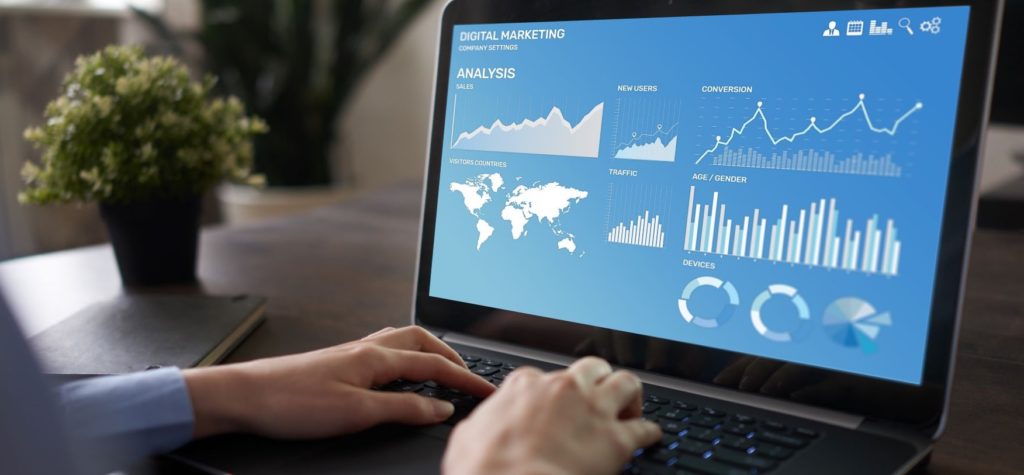
What Does a Marketing Dashboard Do?
The days of single-channel marketing are long gone. 95% of marketers acknowledge that having a multichannel marketing strategy is important.
Presently, 52% of marketers are using 3 to 4 marketing channels. This is an increase from 44% in 2015. Clearly, multichannel marketing is on the rise.
That means that marketing teams have data coming from all over. This runs the risk of that data getting stuck in siloes where it can’t be used effectively.
That’s where a marketing dashboard comes in.
Let’s take a look at marketing dashboards. We’ll help you understand what they are and what they do. This will give you a better idea of what to look for for your marketing command console.
Marketing Dashboard 101: All You Need To Know
Every marketing campaign is different. Each business has its own marketing goals and objectives. You need technological solutions to monitor your goals, to see how your company’s performing.
What Is A Marketing Dashboard?
A marketing dashboard lets you track the key performance indicators (KPI) that are important for your organization. Marketing dashboards also offer a variety of data visualization solutions, so you can easily measure the efficacy of your marketing efforts at a glance.
Marketing dashboards continually monitor all of your marketing campaigns. This offers real-time feedback on your marketing’s performance, rather than waiting for quarterly reports.
A marketing dashboard also makes it easy to share reports and visualizations across the entire enterprise. This helps ensure that everyone’s on the same page so your efforts are coordinated and no resources are wasted.
Why Is A Marketing Dashboard Important?
Marketing dashboards don’t just measure hard data like spending or ROI. A marketing dashboard also lets you measure more subtle ‘soft metrics,’ such as engagement, brand awareness, or customer interactions.
Of course, you’ll be able to measure quantifiable data as well. You’ll want to know how much you’re spending on marketing, obviously. You’ll also want to know what spending is the most effective.
Marketing dashboards also let you keep track of engagement by geographic region. This will offer invaluable insights into how your marketing efforts are performing in different locations.
Perhaps most importantly, marketing dashboards are one of the easiest ways to get your entire enterprise on the same page. One of the most common complaints is the lack of cooperation between sales teams and marketing departments. It’s a matter of one hand not communicating with one another.
At best, this means that your efforts aren’t being used as efficiently as possible. At worst, it creates enmity and tension across your organization when you should all be working together towards a common goal.
Finally, marketing dashboards take the guesswork out of marketing. Even with today’s advanced automation and visualization solutions, there’s still far too much shooting in the dark when it comes to marketing strategies.
Experimentation is all well and good, of course, and can be a source of inspiration or creativity. It also can be an enormous waste of time, energy, and resources. You also run the risk of alienating your existing audience and customer base.
How To Use A Marketing Dashboard Effectively
There is no such thing as an out of the box marketing solution. Anyone who tries to sell you software that will make your marketing automatically successful also has a bridge to sell you, dirt cheap.
Marketing dashboards are tools. Like any tool, you need to know how to use it. Which means having at least an idea of what you’re hoping to accomplish.
One of the keys to using a marketing dashboard effectively is knowing what you’re measuring for. This means having at least an idea of what you’re hoping to achieve with your marketing efforts.
Say your goal is to raise brand awareness. A marketing dashboard will let you select for that. It will then monitor for a diverse cross-section of different variables, such as likes, shares, and click-throughs,
These are the kinds of insights that can be difficult to visualize by looking at single data points.
You’ll also want to decide what data your dashboard should monitor. Your social media channels are an obvious choice, naturally. For the brand awareness campaign, we were just speculating about, however, things like email marketing might not be as high of a priority.
Finally, you’ll want to decide how you want to visualize your data. Not all marketers are data scientists, of course. It might not be obvious when to use a comparison chart or a bar graph.
Whatever you decide, it’ll be easy to implement with a marketing dashboard. That’s one of their greatest strengths. The ability to easily manipulate and visualize data in realtime is incredibly powerful and will give your business a leg up over the competition.
Multichannel marketing is only going to become more prevalent as the Internet becomes more intertwined in our daily lives. Digital marketing is a genie that won’t go back in the bottle. It’s time to learn how to use the resources at our disposal, to master our tools. Otherwise, we may always be playing catch up.
Looking For Digital Marketing Solutions?
Data is becoming like water in today’s digital marketplace. We can use it to grow our businesses and nurture our leads. Or we can drown in it if we don’t know what to look for.
That’s where a marketing dashboard comes in. If you’re ready to make the most of your multichannel marketing data, request a demo of our marketing dashboard software today!
